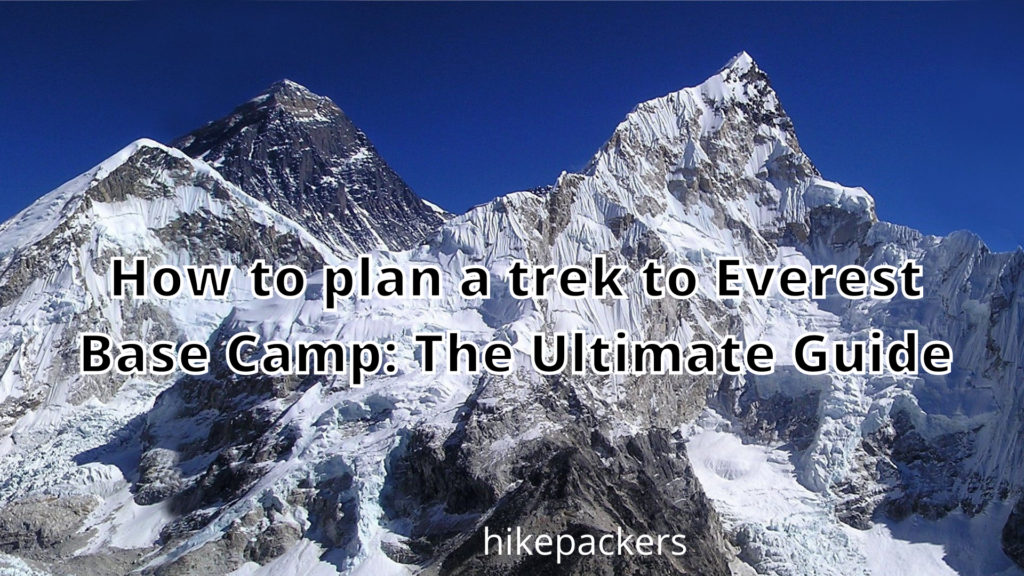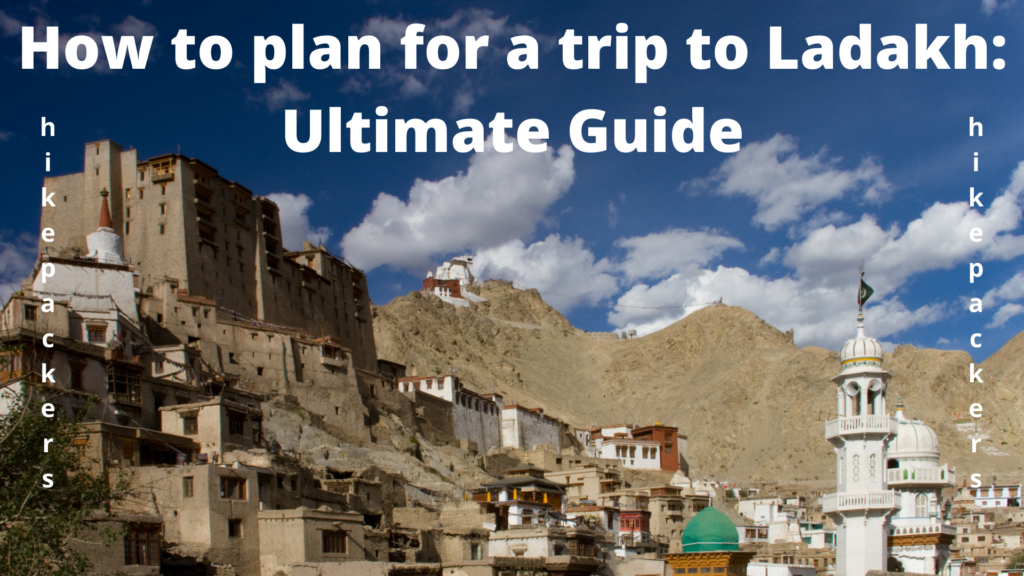Are you thinking of how to plan a trek to Everest Base Camp, one of the most famous hikes in the world? If so, you’ll want to make sure that you are prepared, from how to book your tour all the way to what you’ll need on your trip.
Contents
How to Plan a Trek to Everest Base Camp
This guide on how to plan a trek to Everest Base Camp will walk you through everything you need to know about this popular trek, from choosing your company and guides to packing and more. By following our advice in this guide, you’ll be ready for the adventure of a lifetime!
Trained and Prepare yourself
It’s highly important that you train for your trek. It doesn’t have to be intense training, but if you think you can just go hiking and achieve success, then you are dead wrong. Preparing by walking or running every day is advisable. Also, it’s extremely important that you find out as much information as possible about preparing and going on a trek. You should also contact people who have done treks before so they can give tips on what precautions should be taken in order to be safe. If anything happens during your trek to Everest Base Camp, it could result in serious harm or even death. Having those precautions will help make sure you enjoy your time there instead of worrying about getting hurt or dying.
Consult with Doctors and get recommended Vaccines
Before you set off on your trip, you’ll need to make sure that you are healthy enough to safely make it. Doctors can be crucial in assessing your physical condition and determining whether or not you have any preexisting conditions that could prove dangerous while hiking at high altitudes. You may also want to get vaccinated before departing, as some areas where trekking is popular do require people going into the wilderness to show proof of immunization. Take note of all recommended vaccines before traveling.
Decide on an itinerary
The base camp trek is challenging and rewarding, both in terms of physical and mental stamina. When planning your trek, you’ll want to determine what will be most important during your trip: reaching Mount Everest Base Camp or enjoying downtime with friends. Depending on your itinerary, you may want to plan rest days into your trek so that you have time off when needed but can still reach base camp safely. It’s also important to discuss with family and friends who will be joining you on your trip how much downtime each person wants; if everyone has different interests, it can be difficult finding common ground. Always add two extra days on your itinerary so you will not miss anything if the weather changes or you are blocked in a place for a day by natural calamities, etc.
Research the trek
There are many resources you can use to learn about trekking to Everest Base Camp, including guidebooks, TripAdvisor, and other websites. An important aspect of researching is making sure that you understand your physical abilities and limitations as well. You should also be aware of any pre-existing conditions such as high blood pressure or a heart condition, which could impact your trekking experience. Once you know what you’re getting into and your physical limitations, you can start looking at flights, lodging (like hotels or hostels), transportation (such as domestic flights and jeeps), food supply (mostly included when you buy the packages), etc., so that nothing will come as a surprise when it comes time to go. Doing all of your research now can save you a lot of trouble in the future!
Don’t skimp on safety
One of the most important things you can do before trekking in Nepal makes sure you have Travel insurance. Most companies have what’s called an annual aggregate limit, which means that regardless of how many different things happen in one year, your policy won’t pay out more than a certain amount. In addition to medical insurance, you should get travel insurance that covers trip cancellations, and emergency evacuations. It also provides coverage if your luggage gets lost or stolen during travel (something that happens with surprising frequency). The good news is that there are several affordable policies on offer; World Nomads is recommended by Lonely Planet and it’s my personal choice as well.
Book a Local Trekking Agency
Once you’ve decided on where you want to trek and when to start researching reputable trekking agencies that operate in that area. Since there are plenty of agencies to choose from, take your time and book with one that comes highly recommended by TripAdvisor or individuals who have been before. The company’s reputation is one of your best guarantees of safety, so don’t forget to check it out. When you’re ready, book directly with an agency – travel agents don’t typically work with these kinds of tour companies, so you won’t save much by going through an agent. Be sure to ask about cancellation policies if you plan on canceling or changing your reservation; many companies require at least two weeks’ notice.
Pack appropriately
It’s possible to trek in sneakers, but if you’re going to scale mountains and pass through freezing temperatures, you’ll want gear that can handle conditions. Hiking boots are a good choice; they provide support and traction on steep climbs. You’ll also need something warm enough for high-altitude environments—choose synthetic materials over cotton when possible. Finally, be sure you bring along clothing that is appropriate for layers. It can get really cold in trekking areas at night, even during warmer months of the year; it pays to be prepared with both long sleeves and leggings as well as hiking pants. And remember: more layers can always come off if needed. Check our page essentials trekking gear for Nepal for more information about gears.
Weather will affect your trek
The main thing to keep in mind when planning your trek is that weather conditions can change drastically throughout Nepal. This shouldn’t stop you from embarking on your adventure, but it is important to be prepared! Most of all, try not to venture out into extreme weather conditions because you could face serious health problems and potentially life-threatening situations. During the rainy season, landslides are also more likely to happen, so always stay up-to-date with local news and forecasts before going out on any treks. Consult with your guide and follow their advice.
Everest Base Camp Trek Costs
For Everest Base Camp Trek, you’ll need between $2,000 and $4,000 depending on the services you want. Prepare with plenty of cash (preferably in USD or Euro) so that you don’t have to rely on ATMs or credit cards; both charge hefty fees. Then there are transportation and visa fees that can add up quickly. In order for most people to make it within the right budget, I have already recommended an organized tour group or book with a trekking agency which includes everything with Guide and Porter Services, hotels and tea houses, food, permits, etc. You can also save money by staying in hostels instead of luxury hotels at night.
Remember it’s about the journey, not the destination
Some people think of trekking to Mount Everest as some sort of race, trying to get from one point to another as quickly as possible. But it’s not about beating other people or reaching a destination before everyone else; it’s about enjoying and appreciating each moment along the way. There are many different routes up to Everest Base Camp Trek, but all of them require proper acclimatization and equipment, plus lots of stamina and endurance—there is no shame in taking your time on a trek that takes you through places you will never see again. If you can wake up every morning with a smile on your face and energy on your body, that’s more than enough accomplishment. One foot in front of another will take you far if you just enjoy yourself.
Listen to your body
Hiking and climbing at high altitudes is a physically demanding endeavor, so it’s vital that you pace yourself. You should also schedule rest days in advance—not just because your body needs time to recover from aches and pains, but also because trekking around 10,000 feet above sea level can result in nausea and altitude sickness if you push yourself too hard. If you feel sluggish on day two of your trek, don’t be afraid to take an extra day off. Taking breaks will not only help ensure that you stay fit enough to reach base camp and make it back down safely (and with all of your limbs intact), but they’ll also help prevent injuries along the way.
Best Time to Trek
Spring or fall, when it’s not too hot and not too cold. In winter, temperatures can dip below -30°C -40°C at night, and in summer it can be scorching hot in low land areas with above 25°C to 35°C in Nepal. It’s also best to avoid the rainy season, which falls between June and August. The most popular months are March to May and September to November.
Tipping your Guide and Porter
When it comes time to reward your guide and porter at the end of your trek, there’s no hard-and-fast rule on what you should tip them. It depends on how much you paid for your trek, how good they were and where you are in. The range is about $20-$30 per day, per person. You can give one big tip at the end or dole out smaller amounts throughout your trip. Whatever works best for you!
Conclusion
After reading this article you have clearly understood how to plan a trek to Everest Base Camp. If you still have some questions regarding this trek or any other treks in Nepal then ask your questions in our Hiking Forum, we will answer shortly.




Pingback: Top 10 Adventure Trekkers Destinations in the World - HikePackers
Pingback: The Ultimate Travel Hacking Guide to Manaslu Circuit Trek - HikePackers
Pingback: The Best Hiking Boots of All Time - HikePackers
Amazing article about guide to Everest Base Camp. I would definitely like to give you the credit as resource when I published Everest Base Camp Trek on my hiking agency.
Pingback: 5 Reasons Why Hiking in Nepal Should Be on Your Bucket List - Adventure Puddin
Pingback: How to break in hiking boots - Hiking Boots
Pingback: 12 of the World's Longest Hiking Trails - HikePackers